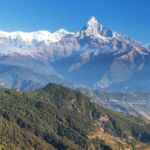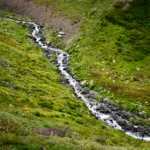The Himalayas are a region of great natural beauty and a captivating source of fascination for many people. Beauty aside, off-grid living in the Himalayas can be a challenge. While many dreams of living in nature without relying on modern infrastructure and lifestyle, the harsh conditions of the Himalayas can make it quite difficult. But with the right resources and knowledge, off-grid living in the Himalayas can be an adventure and life-altering experience.
The Himalayan Mountains have long been a magnet for adventurers and spiritual seekers who want to unplug from the modern world and experience a more straightforward, more elemental way of life. The majestic and isolated mountains often beckon people to find a sacred place of natural beauty and solitude. For many, living off-grid in the Himalayas is about living in harmony with nature and having minimal or no modern amenities.
Advantage of Off-grid living in the Himalayas

The lifestyle of living off-grid in the Himalayas does come with its advantages. Adventurers can explore the region’s untamed landscapes, discover untouched wildlife, and experience strong inner peace. It can also bring people closer and allow more meaningful conversations in a tranquil atmosphere.
Mental Health
Exploring the Himalayas can be beneficial for mental health! For centuries, the Himalayas have been a source of inspiration and growth for many, offering a unique opportunity to explore ancient wisdom while gaining insights into your own personal journey. Whether you are looking for inner peace, clarity of thought, or simply hoping to take deep breaths of fresh mountain air, the Himalayas offer a unique opportunity to take a journey of discovery.

Off-grid living Challenges in the Himalayas
Living off the grid in the Himalayas can be difficult due to unpredictable weather, lack of resources, and difficulty getting help in emergencies.
Electricity for off-grid living
One of the biggest challenges is providing a reliable source of electricity. Few off-grid power sources are available in the Himalayas, so those living off the grid must rely on energy-efficient appliances and renewable energy sources like solar power generators.
Communication
Another challenge faced by those living in the mountains is communication. Contacting and accessing vital services can be difficult and a massive obstacle if an emergency arises. Poor infrastructure also makes it difficult to get to and from settlements, which can limit access to jobs or medical attention.
Weather
In addition, the harsh climate and high altitudes can also easily take their toll. This goes double in the winter when the severe cold can quickly sap your energy and create significant health risks. Those living in the mountains must be prepared to deal with the physical and mental strain of high altitudes and unpredictable weather.
Wildlife

The Himalayas are home to many dangerous wildlife species, many of which pose a significant threat to humans if not given the proper respect. Animals such as wolves, bears, and tigers are a few predators that inhabit the area and can seriously injure or kill unsuspecting hikers if they come too close. In addition, venomous snakes and ferocious big birds are present and can make an unwelcome surprise. It is essential to know the types of wildlife that pose a threat in the Himalayas and to take appropriate safety measures in the region.
Essential Resources
Food and water sources can also be scarce, as large settlements are few and far between, and some areas need to be more remote for large-scale agriculture. This means that off-grid residents must be skilled in foraging and hunting or rely on stockpiling food and provisions to maintain their nutrition levels.
Poor Infrastructure
Living in the Himalayas can also limit access to the local infrastructure. The terrain is so inhospitable that roads, electricity and water are often non-existent or greatly limited. This can make accessing basic necessities, such as medical aid, education, and other services, hard. Furthermore, limited market access can make it almost impossible to make a living in the region.
Experienced off-grid living practitioner
An experienced off-grid living practitioner can adapt to these conditions by blending with the environment and creating shelter and supplies. They can also create a renewable energy source by harnessing solar, hydropower, or wind power. Of course, with the necessary skills, the odds of success become much higher. Those who are brave enough to take the plunge should plan and become prepared for any potential misfortune that may occur.
Conclusion
Off-grid living in the Himalayas is not a decision to be taken lightly. It is a way of life that requires hard work and dedication to survival and sustainability. It reaps the rewards, however, as it offers a break from the hectic pace of daily life and allows for true self-sufficiency. With the right mindset and tools, it is possible to make a comfortable and sustainable living in these majestic mountains.






